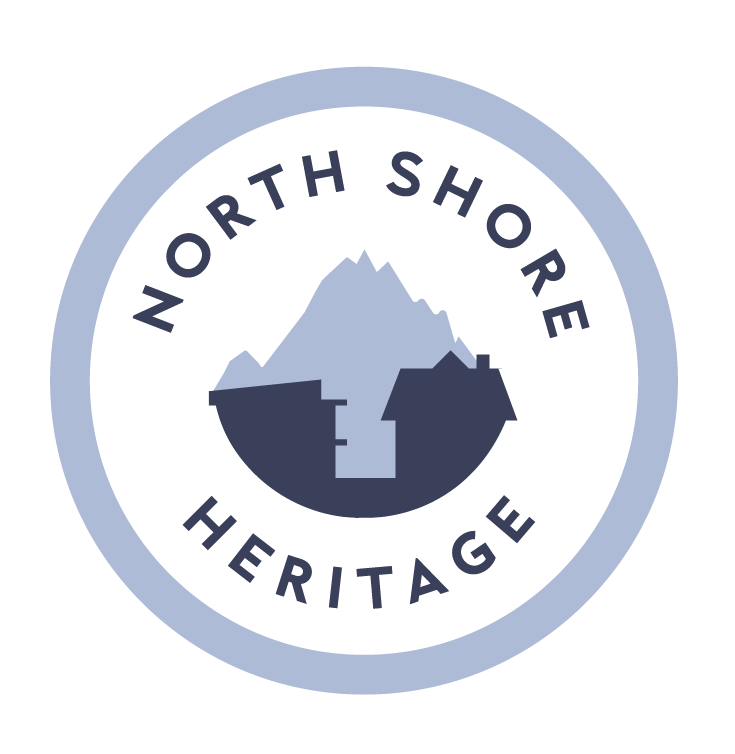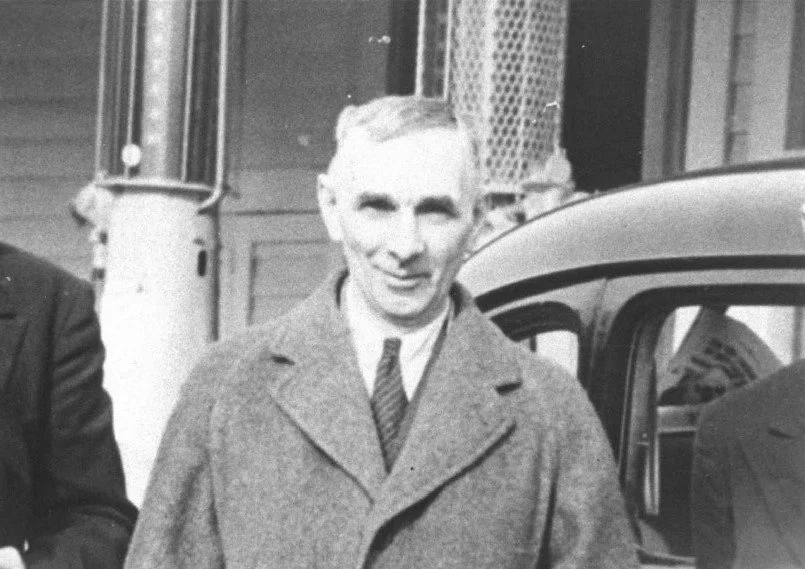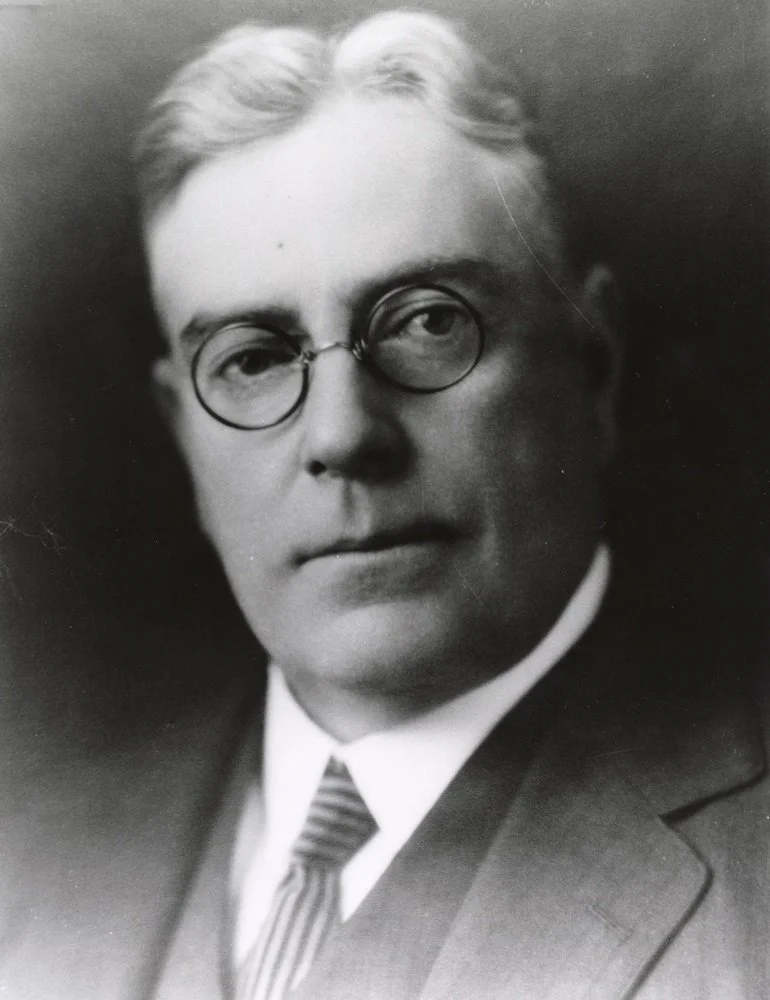Have you ever wondered how Heywood Park got its name? What about Mahon, Loutet, Murdo Frazer, Keith Lynn, Bridgman and many more? These legacy park names were intended to honour and recognize people from North Vancouver’s past. I discovered that 29 North Vancouver parks are named after a person, two being women. While the park names are familiar, the who’s who of them is fading.
Over the years, in many countries, it became customary to name a park as a tribute to a person. In North Vancouver, the honour of a park name has usually been awarded to those who had contributed the park land or had contributed to the community in other ways; past Reeves and Aldermen and land developers, for example. This practice may be changing. Take as an example the City of North Vancouver’s new park at E 16th and St. Andrews, named Topo; it is an abbreviation of topography, “inspired by how the park’s design creatively embraces the site’s natural five-metre slope”.
Local parks for locals are a given these days with the intention being equal access to nature, recreation, and community spaces for all residents. But when did community parks first come about as we know them today? Most of our parks were established decades ago when land was available and the need for green space in our midst was being recognized as essential to the wellbeing of a community. In Victorian times, because of the industrial revolution, cities rapidly became congested and, for factory workers, the fresh air of the countryside was unattainable. Emerging public green spaces offered the opportunity to escape the grime, pollution and noise of industry. While the industrial revolution was not a significant part of North Vancouver’s development, parks were and are. Our North Vancouver Parks started with the vision and foresight of Edward Mahon.
Park names of North Vancouver
Mahon Park was named after Edward Mahon, an Anglo-Irish land developer who was the younger brother of British-based John Mahon, the principal shareholder of the North Vancouver Land and Improvement Company, incorporated in 1891. He appointed his younger brother Edward to be the company president in North Vancouver. Edward brought with him the prevailing philosophy of the benefits of green space in developed areas. The irony here is that the entire North Shore had been a densely forested green space until early settlers moved in to log and then develop.
As North Vancouver was developing structures, where forests had been lost to intense logging, his vision of green space started with the creation of Grand Boulevard and the Green Necklace, “Completion of this great public way, with the supporting parks and gardens, will perpetuate health areas and pleasure grounds within a short distance of every resident of the present city of North Vancouver, and our municipality will have the distinction of possessing the most spacious boulevard contained within the limits of any city in the world – a great artificial lung, encompassing the central town, breathing, pressing, forcing into it health and vitality…”.
Mahon and his brother, John, invested in developing North Vancouver for profit through their company, the North Vancouver Land and Improvement Company, but it seems that Edward was also involved in the community. While his brother John did visit North Vancouver, Edward worked and lived most of his life in North Vancouver and Vancouver until his death in 1937. He was a 1907 founding father of the City of North Vancouver and of Castlegar in 1897, Castlegar being the name of the Mahon family Irish home. North Vancouver’s St John the Evangelist’s first church building was built on land donated by Mahon. In 1910 he purchased the Capilano Suspension Bridge, building the Capilano Tea House the following year as well as the log home that is now part of Spuraway Gardens, which “was built as a 'retreat house in the woods' for Edward by Japanese people in gratitude for his business dealings with them during a period of blatant discrimination against Orientals.”
On occasion of incorporation of the City of North Vancouver, 1st July, 1907.Edward Mahon, 2nd to right front row & J.C. Keith 2nd to left front row. Founding fathers. Courtesy of MONOVA/North Vancouver Archives. INV 96
In 1910 Mahon and his brother, John, sold land they held in the City of North Vancouver to form what is today the largest park within the City of North Vancouver, Mahon Park. It includes several fields and several entry points to trails through the adjacent ravine with its Wagg and Mission creeks. Since its beginning, the popular park has been home to the Royal Canadian Engineers Corps, to soccer, track and field, and baseball teams and to a variety of parades and celebrations like May Days with May Day queens. The retired P.G.E. railway station was located there for some years and became home to the first North Vancouver Museum.
In years past, kids and adults flocked to the park to enjoy a large outdoor swimming pool. While the pool is long gone, the park still provides a venue for a variety of outdoor pursuits. The facilities include the eponymous Fen Burdett Stadium, the Margaret Fulton Adult Daycare Centre and the recently opened childcare centre and public amenities.
Baseball Diamond at Mahon Park, 1913, Courtesy of MONOVA/North Vancouver Archives. INV 2443
Swimming Pool at Mahon Park, 1960, Courtesy of MONOVA/North Vancouver Archives. INV 2443 & PHC 9267
Today’s track in Mahon Park, Courtesy Colin Lawrence
Since 1914, through the decades of changes the park has seen, the Lt. Col. J. Pemberton Fell Armoury has remained as a significant building in the park. James Pemberton Fell’s cousin was Henry Heywood-Lonsdale. the son of Arthur Pemberton Heywood-Lonsdale. Henry takes us to the next park.
Sling bridge and suspension bridge constructed by 6th Field Co. Mahon Park. November 1916. Courtesy of MONOVA/North Vancouver Archives. INV 9435
Col. J.P. Fell Armoury, Courtesy Colin Lawrence
Heywood Park is named for Henry Heywood-Lonsdale, who, like his father Arthur Pemberton Heywood Lonsdale, never set foot in Canada. The English father and son established the Lonsdale Estates Company of 1882 in North Vancouver. Arthur’s nephew, James Pemberton Fell, was appointed to manage the North Vancouver Lonsdale Estates Company.
Directly east of the park is Hamilton Avenue and Hamilton Heights, named after Mabel Hamilton the wife of Henry and, no, she never came here.
Pemberton Heights, directly west of the park, and nearby Pemberton and Fell Avenues take their names from James.
Heywood Park covers 16 hectares of greenspace that includes Mackay Creek. The Englishman J.P. Fell, as with Mahon, lived, worked and died in North Vancouver and Vancouver. During WWI, he commanded the 1st and 7th Field Companies of the Canadian Engineers on the Western Front and “had his horse shot out from under him at the 2nd Battle of Ypres.”
Colonel James P. Fell, original commander of the 6th Field Co., C.E. in 1912. Courtesy of MONOVA/North Vancouver Archives INV 9826
The park offers a variety of activities; a kids’ playground, a zipline, a picnic area and the Heywood Park walking loop around Mackay Creek. Some areas of the park are currently being upgraded with the playground behind temporary fencing.
Photo of entrance to Heywood Park with playground and temporary fencing. Courtesy of Colin Lawrence.
If you walk the Loop Trail, pause at the B.C. Hydro right-of-way and try to imagine a 98 ft wooden trestle streetcar bridge that, when it opened in 1911, was the tallest structure in North Vancouver. The bridge carried the B.C Electric #3 streetcar line. The route followed West Keith to Fell Avenue, then north to west 20th, then west to Hamilton Avenue, where it crossed Mackay Creek on the trestle bridge to Pemberton Heights and continued north on Mackay Avenue, then west on West 22nd towards the Capilano River.
Determining Mackay Creek’s namesake has proven difficult. A reasonable guess is that it was George Grant Mackay, a Scottish civil engineer, a Vancouver park commissioner and president of the Burrard Inlet Railway and Ferry Company, who purchased land on the banks of the Capilano River where he established a retreat cabin and in 1889, built the first Capilano Suspension Bridge, constructed of hemp rope and cedar planks. Today, Mackay Creek continues from Heywood to Murdo Frazer Park north of Highway 1.
Murdo Frazer Park is named after Scotsman and North Vancouver politician Murdo McLennan Frazer who described himself as a canny Scot. Born in Glasgow, in 1893, he immigrated to Canada as a young man with his first stop, Edmonton, then later moved to the West Coast before WWII. A hydraulic engineer, he became a partner in a Vancouver hydraulic equipment company. He was first elected to the District of North Vancouver Council in 1955 as a councillor and in subsequent years as the reeve. After he died in 1966, the park was established with his name in recognition of his service to the District of North Vancouver.
Murdo McLennan Frazer, Courtesy of MONOVA/North Vancouver Archives INV F106-S15-19
The park offers a variety of activities, from strolling through the wooded trails to pitch & putt golf, pickleball and tennis, a kids’ playground, a duck pond and log cabin. The playground started as the Elizabeth Way Park before being absorbed into Murdo Frazer. The park also includes the recently upgraded B.C. Hydro substation.
Elizabeth Way Park, now a part of Murdo Frazer Park. Courtesy of MONOVA/North Vancouver Archives Inv. F106-S1-77
In 1950, Vancouver businessman, Victor Golden, built the log cabin as a retreat and hunting lodge. He diverted water from Mackay Creek to establish a trout pond, which is today’s duck pond. Possibly the war had delayed his plans as he bought the 6 acres of land in 1936. Fast forward to 1969 when the District of North Vancouver acquired the land from Golden to expand the recently established Murdo Frazer Park with the cabin used to house the park caretaker.
The Golden family cabin, today known as the Murdo Frazer Cabin. The Murdo Frazer Duck Pond is in the foreground.1954. Courtesy of MONOVA/North Vancouver Archives Inv PHC 16848
Fast forward again to recent years when the cabin was discovered by Hollywood North and it can be seen on big and small screens in productions such as Once Upon a Time, Nancy Drew, Bates Motel, Supernatural, MacGyver and the park ranger Kokanee beer ads. The cabin has become an asset to the DNV and approval was given to upgrade the cabin, starting in 2022. It was work that coincided with the recent massive upgrade of the neighbouring B.C. Hydro Capilano substation during which filming could not take place in the park. Work has now been completed on both projects.
B.C. Hydro reported in their September 22, 2025, Stories and Features, that, “Residents and visitors to North Vancouver who visit Murdo Frazer Park next to the newly rebuilt Capilano Substation will be greeted by a new Sḵwx̱wú7mesh welcome figure…. The welcome figure stands in the park adjacent to our newly energized Capilano Substation, which replaced a facility that had been in service since the 1950s.”
Loutet Park and Farm is east of Lonsdale and just below the highway on Rufus Avenue. It is named after another Scotsman and local politician, Jack Loutet, who was born in 1885 in Coupar Angus, Perthshire. Twenty years later, he was living in North Vancouver, forging a career in real estate and insurance. He also became the first postmaster in North Lonsdale and the first president of the Notaries Society of B.C. For eleven years, he was a Councillor of the D.N.V. before becoming Reeve in 1923. He also served as mayor for the City of North Vancouver, as well as being elected as a conservative candidate in 1930 to the B.C. Provincial Legislative Assembly.
Jack Loutet, Mayor of the City of North Vancouver 1945-1947. Courtesy of MONOVA/North Vancouver Archives Inv 14052
Coincidentally, both Frazer and Loutet died in the autumn of 1966. As with Frazer, Loutet was honoured with a park named for him. But did you know that before becoming a popular neighbourhood park, it was a neglected ravine area used as a municipal dump until 1950 and then infilled at the time of the Upper Levels construction? Today the well-used park offers a scenic trail loop, playing fields, a kids’ playground, a dirt jump park and Loutet Farm, which opened in 2011 and is a part of the Edible Garden Project that promotes neighbourhood farms and gardens to produce fresh produce through the participation of volunteers.
Photograph of a garbage pile in what is now Loutet Park, 195x, Courtesy of MONOVA/North Vancouver Archives. INV PHC 16561
At the south end of the park, next to Brooksbank Elementary School, there is also Gerry’s Garden. Created by Gerry MacPherson, it is dedicated to his late son, Jeff, who died at age 47 from cancer. Students from Brooksbank school became involved and donated a large stone centrepiece. At age 100, the WWII veteran was given the Freedom of the City of North Vancouver at a ceremony at City Hall. Gerry died 2 years later in 2022.
Work has started on the Casano-Loutet pedestrian and cycle overpass that will link the park to north of the highway.
Keith-Lynn & Bridgman Parks are 2 smaller parks that sit south of Loutet. Keith-Lynn owes its name to James Cooper Keith born in Aberdeenshire, Scotland and to John Linn, born in Edinburgh. Two men more different from each other can hardly be imagined. Keith, who was the second Reeve of the District of North Vancouver from 1892-1894, is the Keith Road Keith, and was also a major shareholder in Edward Mahon’s North Vancouver Land and Improvement Company. John Linn, from a poor Scottish family, enlisted in 1846 at the age of 25 with the British Royal Engineers and was stationed as a sapper in Sapperton under the charge of commander Colonel Richard Clement Moody (Port Moody). He earned end-of-military service reward land next to a creek on the north shore of Burrard Inlet – it became Lynn Creek and that led to Lynn Valley and all the other Lynns.
James Cooper Keith, Reeve of the District of North Vancouver from 1892-1894. Courtesy of MONOVA/North Vancouver Archives Inv. F 106-S15-2
John and Mary Linn, CVA 371-1257, Courtesy City of Vancouver Archives, Major Matthews Collection.
Edward Harry Bridgman came as a child from England with his parents to Vancouver. He was educated at Lorne College, Sapperton, before training as an accountant. Accountancy led him to working for a variety of companies, including Lonsdale Estates and the North Vancouver Land & Improvement Company. He became involved in politics in several roles that included Reeve of the District, 1915-1921, Alderman of the City, 1923–1930, Mayor 1931-1932, and some years later deputy minister of municipal affairs for the Province of British Columbia. Later his grandson, Edward Donald Bridgman, would serve in the City of North Vancouver as a Deputy City Engineer.
City of North Vancouver Mayor E.H. Bridgman. (1931-1932) He was alderman for the City of North Vancouver 1923-1930. Courtesy of MONOVA/North Vancouver Archives. INV 4825
Drawing of E.H. Bridgman working in Lonsdale Estate Offices. Source: Internet Archive
And, which two parks are named after women? Well, one is Victoria Park. The other, Eliza Kuttner Park, is dedicated to the memory of Eliza Kuttner, who became the tragic victim of a landslide when her home was carried down the slope at the Berkley escarpment, 19th January, 2005. The park is at 2430 Chapman Way, near the Seymour River.
Next task for me, make a list, with a short bio, of each of the other 23 parks’ eponyms.
Do you have a favourite park name in North Van? And how should parks be named? Would welcome your comments, just scroll down to find the comments box.
SOURCES and ACKNOWLEDGEMENTS
North Vancouver Archives Photos and Info – Special thanks to Georgia Twiss.
Mahon Park:
https://www.nvrc.ca/sites/default/files/2022-09/pa_call_-_nv_green_necklace_final.pdf
https://walkclickmake.com/2016/04/21/walking-the-water-in-north-vancouver-the-green-necklace/
https://www.trailsintime.org/html/whatsnew
https://www.cnv.org/parks-recreation/parks-greenways/greenways/green-necklace
Heywood Park:
https://www.northshoreheritage.org/blog/2022/7/8/street-names-in-north-vancouver
https://www.facebook.com/groups/goldtrailsandghosttowns/posts/10162808598782044/
https://danielfrancis.ca/blog/riding-rails
Murdo Frazer Park:
Special thanks to Margaret & Roger Campbell and their friend Adrian, who pointed me in the right direction in my research of the Murdo Frazer park.
https://www.findagrave.com/memorial/202279253/murdo-mclennan-frazer#view-photo=191053145 plaque In the park
https://www.newspapers.com/newspage/491971851/
https://www.dnv.org/news/murdo-frazer-cabin-renovation-complete
https://www.dnv.org/news/murdo-frazer-cabin-renovation-complete
https://www.bchydro.com/news/conservation/2025/squamish-nation-welcome-figure.html
Loutet Park
https://www.seniorlivingmag.com/articles/loutet-farm-edible-garden-project/
https://www.nsnews.com/in-the-community/loutet-farm-fresh-produce-local-food-security-5691592
https://ediblegardenproject.com/
https://en.wikipedia.org/wiki/Jack_Loutet
https://www.findagrave.com/memorial/204448714/john-loutet
Gerry’s Garden https://www.nsnews.com/in-the-community/north-vancouver-man-who-created-gerrys-garden-presented-with-citys-highest-award-3116486
Keith-Lynn Park
https://www.northshoreheritage.org/blog/2023/9/19/john-linn-and-his-promised-land
Bridgman Park
https://archive.org/details/britishcolumbian00newsrich/page/n90/mode/1up?view=theater
https://vancouversunandprovince.remembering.ca/obituary/edward-bridgman-1088546525
Parks of North Vancouver – Google Maps

















